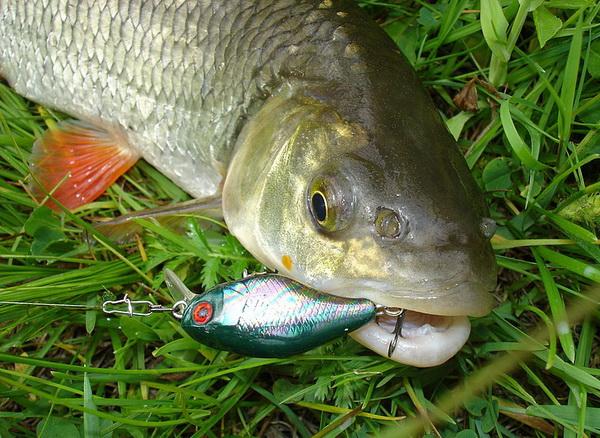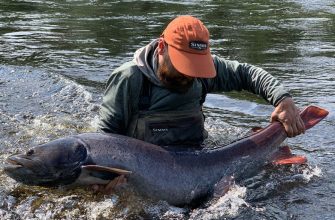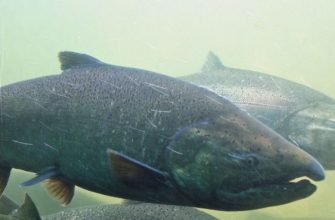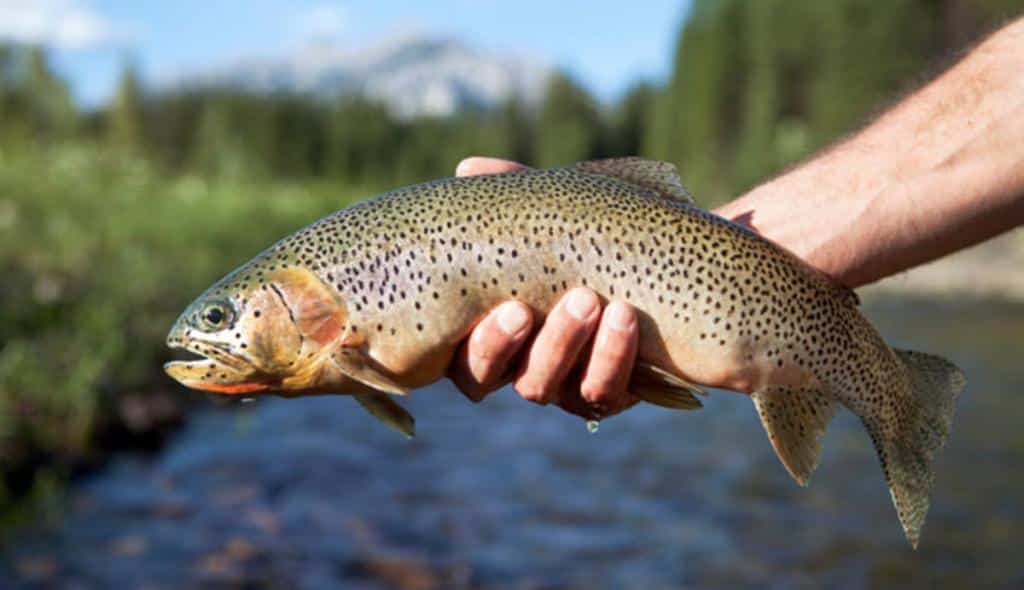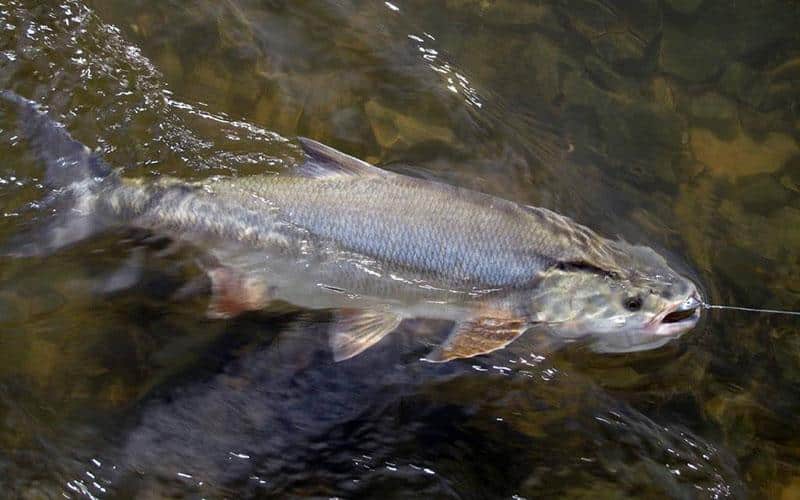Chub fish: what it looks like, photo and description, habits, where it is found, catching and cooking. Chub meat is called white, because of its dietary and taste qualities. But not everyone succeeds in trying to catch and taste the cunning fish, since it is not suitable for mass catch.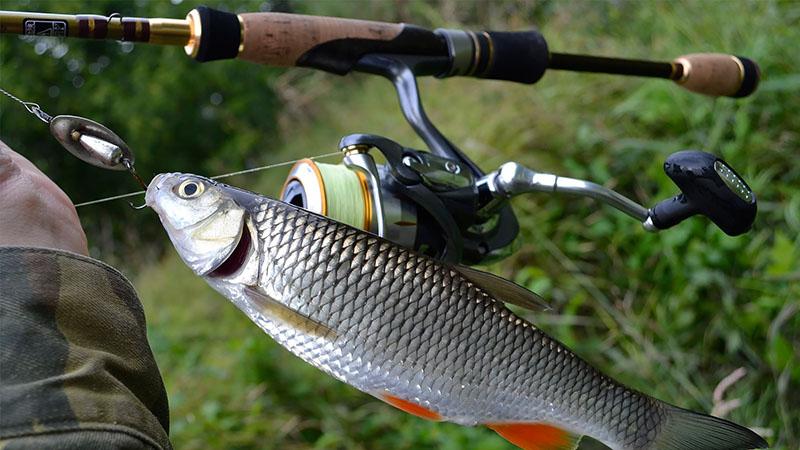
- What kind of fish is a chub – average length and weight
- What does chub fish look like: different types with photos and descriptions
- Difference from ide, char and other similar fish
- Where is the chub found
- Habits and lifestyle depending on the season
- Spawning features
- Nutrition
- How the chub is caught
- Where to find: Chub parking places on the river
- Gear used
- How to catch – what, depth, fishing tactics
- Taste, how to cook
- Поделиться ссылкой:
What kind of fish is a chub – average length and weight
The chub belongs to the carp family, has no commercial value. Distribution area – most of the rivers of the middle lane. For fishing, fishermen use a traditional float fishing rod, spinning, donkey. https://tytkleva.net/lovlya-xishhnoj-ryby/spinning/strategiya-i-taktika/lovlya-golavlya.htm The maximum size of an adult fish is 7-8 kg with a length of about 70-80 cm. Spawning begins from the third year of life .
Interesting! The Latin name of the chub is Squalius (mullet) given because of the similarity of the species.
Chub individuals live up to 18-20 years. The famous fisherman and naturalist L.P. Sabaneev claimed that the fishermen managed to get fish weighing 15-16 kg, about 80-90 cm long. Maybe in his time it was so. But now individuals from 2 to 4 kg are usually considered large specimens. The body of the fish is cylindrical, the nose is blunt raised upwards, the eyes are large. The back is dark green almost black. The fins on the peritoneum are reddish, the pectorals are orange.
What does chub fish look like: different types with photos and descriptions
According to the habitat, color and size, 5 main types of fish are distinguished. Common features are 8 fins, a blunt-nosed head, a broad, cylindrical body, and reddish eyes and a wide mouth. But each species has its own distinctive features:
- common (Squalius dobula) – the dorsal and caudal fins are almost black, the sides are silvery, the maximum weight of an adult large chub is up to 5-6 kg, the head is slightly flattened from above;
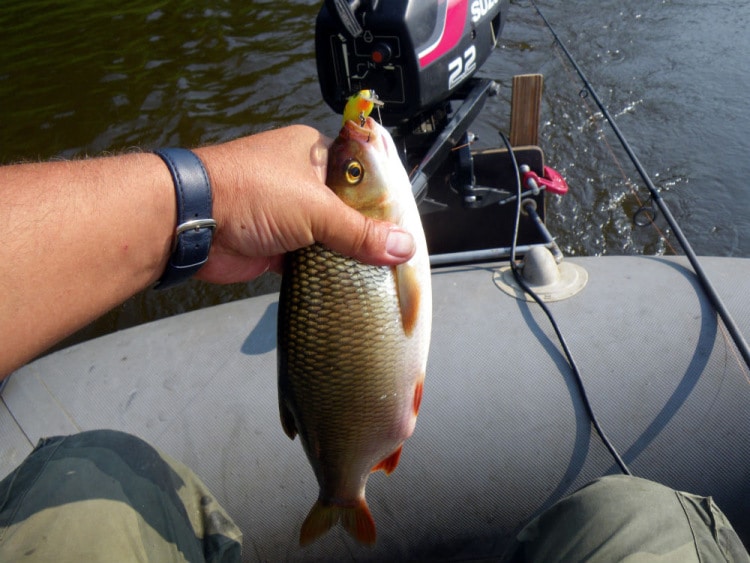
- Caucasian (Squalius aphipsi) – has a more elongated body, silvery fins on the abdomen;
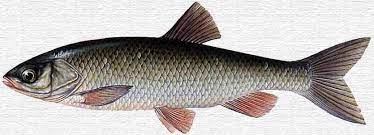
- Anatolian (Squalius anatolicus) – endemic to the Seyhan River;
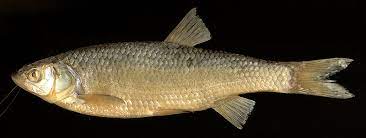
- Agdam (Squalius agdamicus) – a sharp thickening of the body behind the head;
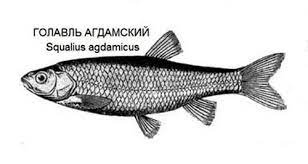
- Croatian (Squalius svallize) – has a convex anal fin.
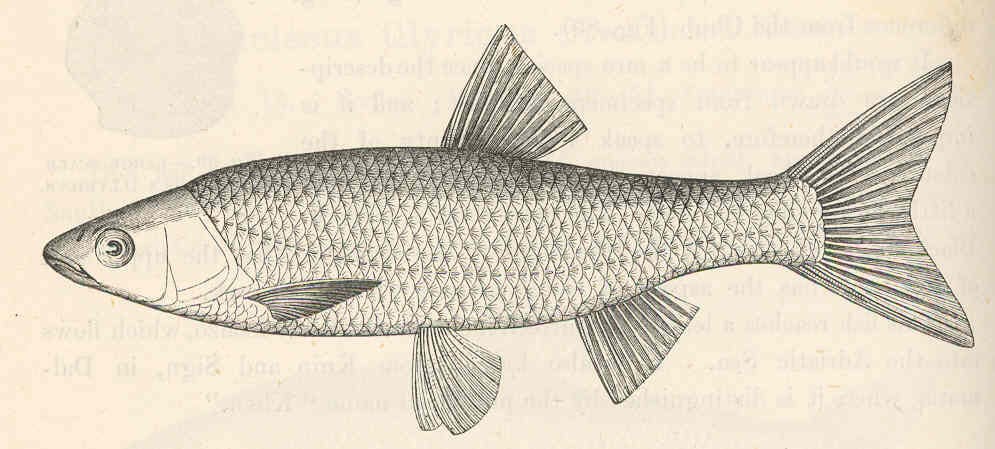
According to their habitat, chubs are divided into river and lake. Individuals living in flowing rivers are slightly larger in size.
Difference from ide, char and other similar fish
Freshwater bodies are inhabited by many species of cyprinids, many of which are very similar. Confusion leads to errors in finding, choosing a bait or bait and, as a result, to a poor bite due to incorrectly selected bait and bait. Each member of the family has its own characteristics and differences that will help in determining the species. Most often, caught young ides are called chub and vice versa. The main differences between the ide are that when compared, it is thicker, wider and shorter. The back of the chub is darker, and the scales are smaller. The ide has redder fins. Fish are found in the fresh water of fast small rivers. It is extremely rare to catch a lobster, for example, in the Volgograd reservoir. This species prefers clean water rich in oxygen. Fishermen have one simple way to determine whether a chub is found in a pond – by the “blooming” of water in the summer. If it is typical for a river or lake, then it is useless to look for this representative of carps, it is easier to catch a tench or perch. Chub habitat: Vetluga, Kama, Volga, Terek, Don and other rivers with tributaries can please fishermen with such a trophy as a large broad-nosed chub. [caption id="attachment_885" align="aligncenter" width="600"]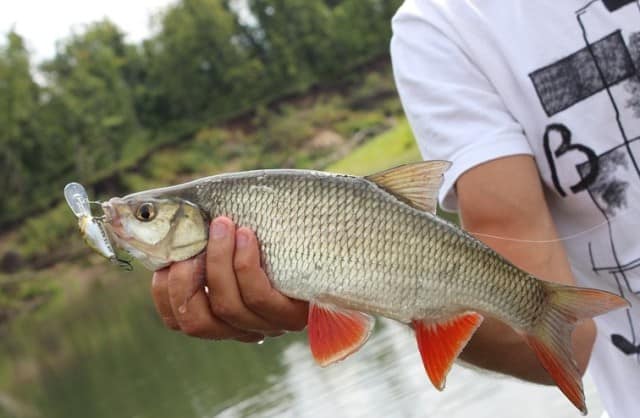
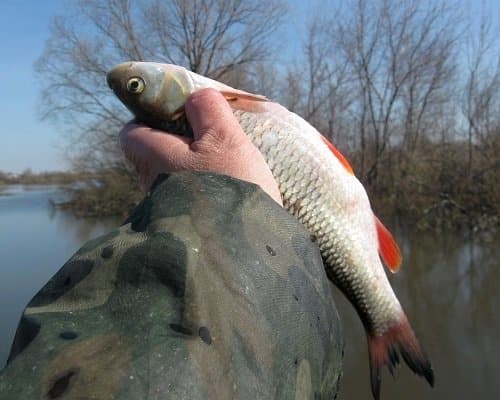
Where is the chub found
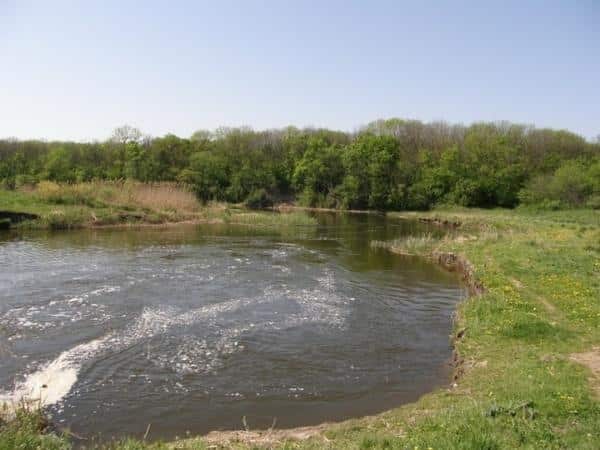
Habits and lifestyle depending on the season
The fish are active in spring, summer and autumn, but in winter the chub stand and practically do not feed. https://tytkleva.net/lovlya-xishhnoj-ryby/spinning/strategiya-i-taktika/lovlya-golavlya-vesnoj.htm For this reason, they are hunted during the warm season. For successful fishing, you need to learn some behavioral features characteristic of each season:
- from March to May they catch chub on the bottom in the morning and in the afternoon, at this time the fish actively feeds, with the exception of a couple of weeks after spawning;
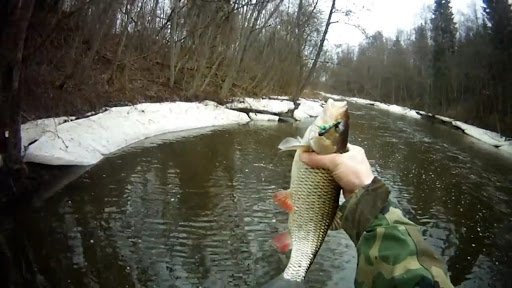
Spring chub is good for bottom tackle - from June to August – they are caught with a spinning rod or a float rod, at this time the fish prey on insects falling into the water and keep in the upper layers;
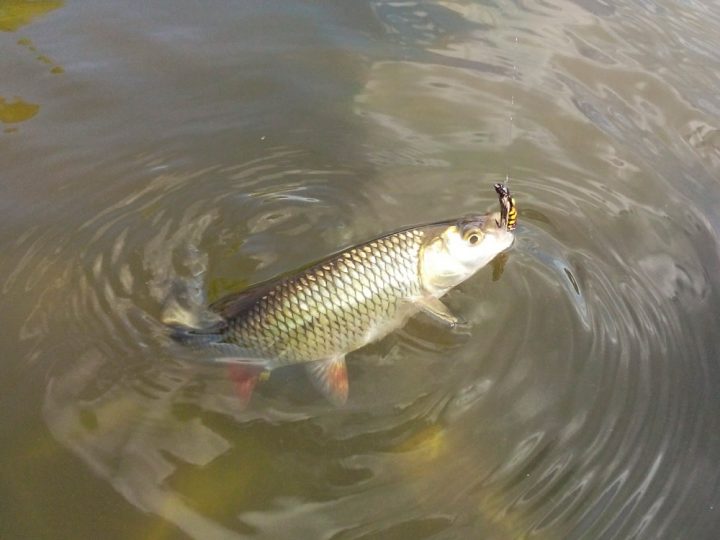
You can successfully catch chub on the bombard in summer - from September to November – until the ice became, in autumn they search for chubs at the bottom, they actively hunt fry with the help of spinning and heavy compact baubles.

Spawning features
The fish begins to spawn in the third year of life. Spawning begins in spring, depending on the weather conditions of the area, the period begins in early April and ends by mid-May. As soon as the water warms up above 12 degrees, the chubs begin to move towards the spawning site. Having brushed aside, the fish become lethargic, at this time they are not interested in any bait. For a good catch, you need to wait until 7-10 days have passed and start fishing.
Important! After spawning, the chub is well caught on compact rolls, micro-lure, and small edibles.
Nutrition
Like many cyprinids, chubs are omnivores. During the spring zhor they devour everything they can grab. In autumn, they demonstrate the habits of a predator, hunting exclusively for fry. At this time, it is worth giving preference to spinning fishing. https://tytkleva.net/lovlya-xishhnoj-ryby/spinning/strategiya-i-taktika/lovlya-golavlya-osenyui.htm A typical fish diet includes:
- seaweed;
- berries;
- larvae and adult insects;
- fry;
- worms;
- crustaceans;
- frogs and small fish.
Large individuals are able to attack and eat even small rodents, the size of an adult mouse. Fish of the first and second years feed on algae and larvae.
How the chub is caught
There is an opinion that there is no chub in troubled waters. But there is one inaccuracy in the statement, if the reservoir is inhabited by this type of fish, then it can be caught even with significant cloudiness. The Shcherbakov brothers, based on the experience of fishing in different regions of the country, consider adults to be no less cautious and cunning than trout. The chub has good hearing. While fishing, it is better not to make sharp sounds – the grinding of metal, the running car engine, pumping up the boat with a pump, all this can frighten off potential prey. [caption id="attachment_8518" align="aligncenter" width="976"]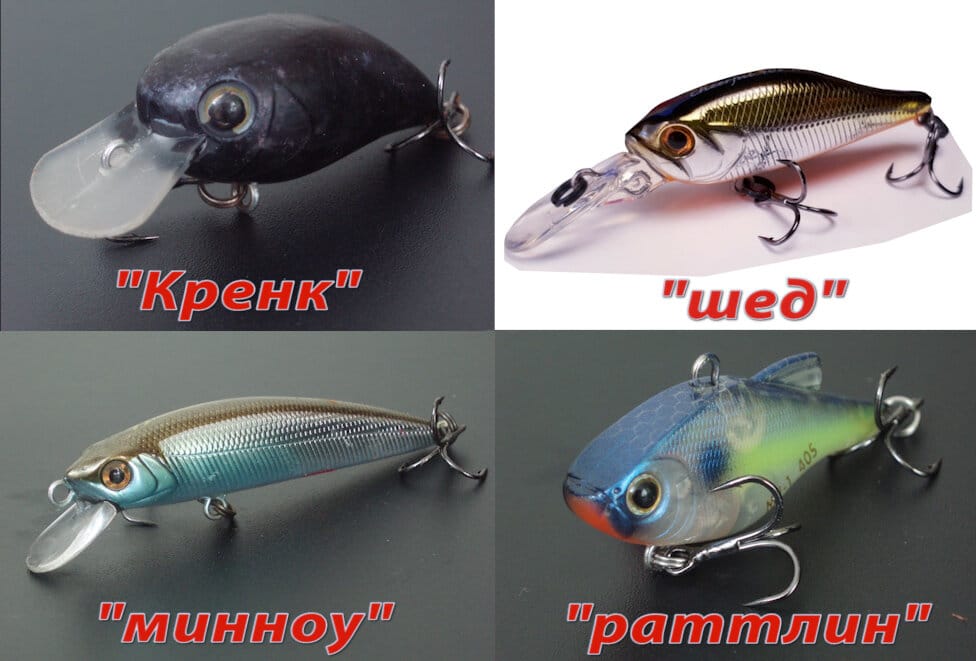
Where to find: Chub parking places on the river
Stormy rifts of fast rivers are favorite places not only for trout, but also for chub. When choosing a location, consider the following factors:
- clear cool water;
- clean rocky or sandy bottom;
- bends, rifts, exits from pits;
- areas with overhanging willows.
In warm weather, the chub keeps to the surface and prefers protected places. In spring and autumn, it is difficult to find fish near the shore, except for the spawning period. In an unknown body of water, you can use a camera or echo sounder to determine the bottom topography, or an application that indicates depths.
Gear used
How and on what to catch a chub depends on the behavior of the fish at a particular time. For more months of the year, the chub bites perfectly and is caught on the bottom. In spring and summer, you can also catch fish on a float rod and on a spinning rod.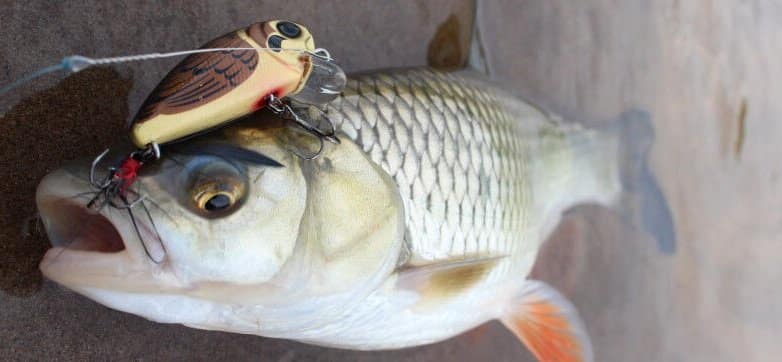
How to catch – what, depth, fishing tactics
The sensitivity of fish to sounds excludes the possibility of fishing from a noisy iron boat. It is worth fishing from a rubber boat with an alloy. A fisherman can also improve his situation by catching a chub from a swimming facility tied to the shore. If a live bait donk is used, a heavy sliding bobber is used to cast. This will make it possible to throw a live bait or other bait to the exit from the pit, or to a roll. A shadow on the water can also scare the forehead, the fisherman needs to monitor the position of the sun, it is best to find shelter and fish from it. Catchable baits in addition to live bait will be:
- Chafer;
- grasshoppers;
- liver;
- chicken’s meat;
- small crustaceans or fish;
- worms.
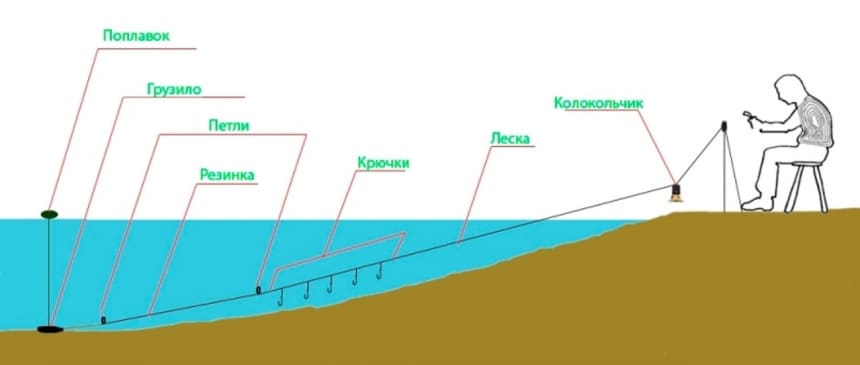

Taste, how to cook
Meat full of bones is considered not particularly valuable among cooks. But due to the varied nutrition of the chub, it has a good taste, and is also rich in useful amino acids. The chub is good baked, as well as grilled. Delicious fish is fried on a fire right after the catch. It is also indispensable in the ear. How to cook chub: https://youtu.be/_lUV4ns9D1Y Despite the lack of commercial value, fish meat is considered an excellent dietary product. Fishermen go out to his prey for interesting fishing and the opportunity to outwit the cautious chub.
